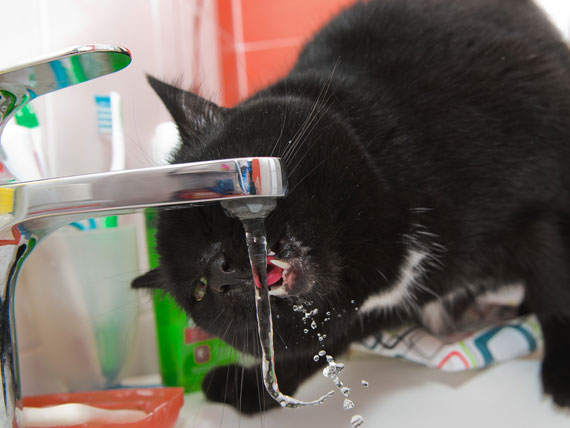Cats are finicky by nature and they can get quite attached to their surroundings. Do you ever wonder why your cat suddenly does a vanishing act when you bring his carrier out? First of all your furry feline probably senses that this is going to end up to be another trip to the family vet. Your cat does not want to get prods, pokes and possibly injections to boot. It seems that dogs do not have the problem with traveling in a car. They like to accompany their master on outings in the car. However, travel with a cat can be quite difficult. You cat may be a pure homebody and not like to travel. Here are some ways that your can help your cat cope a little bit better.
You will find that if you have gotten your cat used to traveling at a very young age then they will tolerate the carrier and the travel much easier. You should try taking your cat for short, frequent drives if it is only to the store, a spin around the block or to visit friends. In this way, your cat will not immediately associate a car ride with a trip to the vet. If you have trained your cat to tolerate a harness and leash, then you should try taking him on car rides to check out the nature scene a little farther than your own backyard. When your cat tolerates the shorter trips then you can begin to try longer excursions.
In the situation of spending long periods of time away from your home, you may wish to bring your cat along. This way the feeling of being separated is avoided for both you and your cat. For international travel you may need to check and see if there are any special accommodations needed. These special accommodations may include documents, vaccinations or any other accommodations needed for your cat. In the cases of quarantine, it may be easier for you to leave your cat behind this time. The stress that is involved with quarantine just would be too much unless you were looking to permanently relocate. Before you engage in the travel, have your cat visit the vet for any check ups and shots that your cat may be due for. Also make sure to ask about sedatives. You want to call ahead and make sure that the place of stay permits animals.
A very essential thing to have is a cat collar and identification tag that has the name of your cat, your name and your address and the phone number of not only your home but of the destination. Your cat will also need to have his harness and leash, the usual food that he eats, a bottle of his drinking water, his litter box, his bowls, a bag or two of litter, a scooper, grooming and first-aid supplies, medications, health records, and a few of his favorite toys from home. You should not forget such cleanup supplies as paper towels and spray cleaner. If you line the bottom of the carrier with disposable diapers this will help to soak up any accidents and make cleanup that much easier.
When traveling by vehicle, be safety conscious. Prevent shifting and rocking by placing the carrier in a very secure spot. With out blocking ventilation you may place a towel over the carrier to ease your cat and give him some comfort. Talking in soft calm tones or even soft music playing over the radio can help your cat to relax. At each stop you make on your trip put a leash and harness on your cat and allow him to stretch his legs. Your cat should never be left unattended in your vehicle for any reason. Humidity that can build up in the vehicle can cause your cat to have heatstroke.

 How to Grow Cat Grass
By Stacia Friedman
Nibbling on g
How to Grow Cat Grass
By Stacia Friedman
Nibbling on g
 How Drinking Water Could Save Your Cat's Bladder
Why Your Cat Needs to Drink More
How Drinking Water Could Save Your Cat's Bladder
Why Your Cat Needs to Drink More
 What is in Cat Litter?
Understanding Clay, Silica and Biodegradable C
What is in Cat Litter?
Understanding Clay, Silica and Biodegradable C
 Wet Food Diet: Is it Better For Your Cat?
Tips for Feeding Your Cat
In the wild, cat
Wet Food Diet: Is it Better For Your Cat?
Tips for Feeding Your Cat
In the wild, cat
 5 Ways to Know Your Cat Food is Worth the Money
How to Find the Best Cat Food for the Right P
5 Ways to Know Your Cat Food is Worth the Money
How to Find the Best Cat Food for the Right P